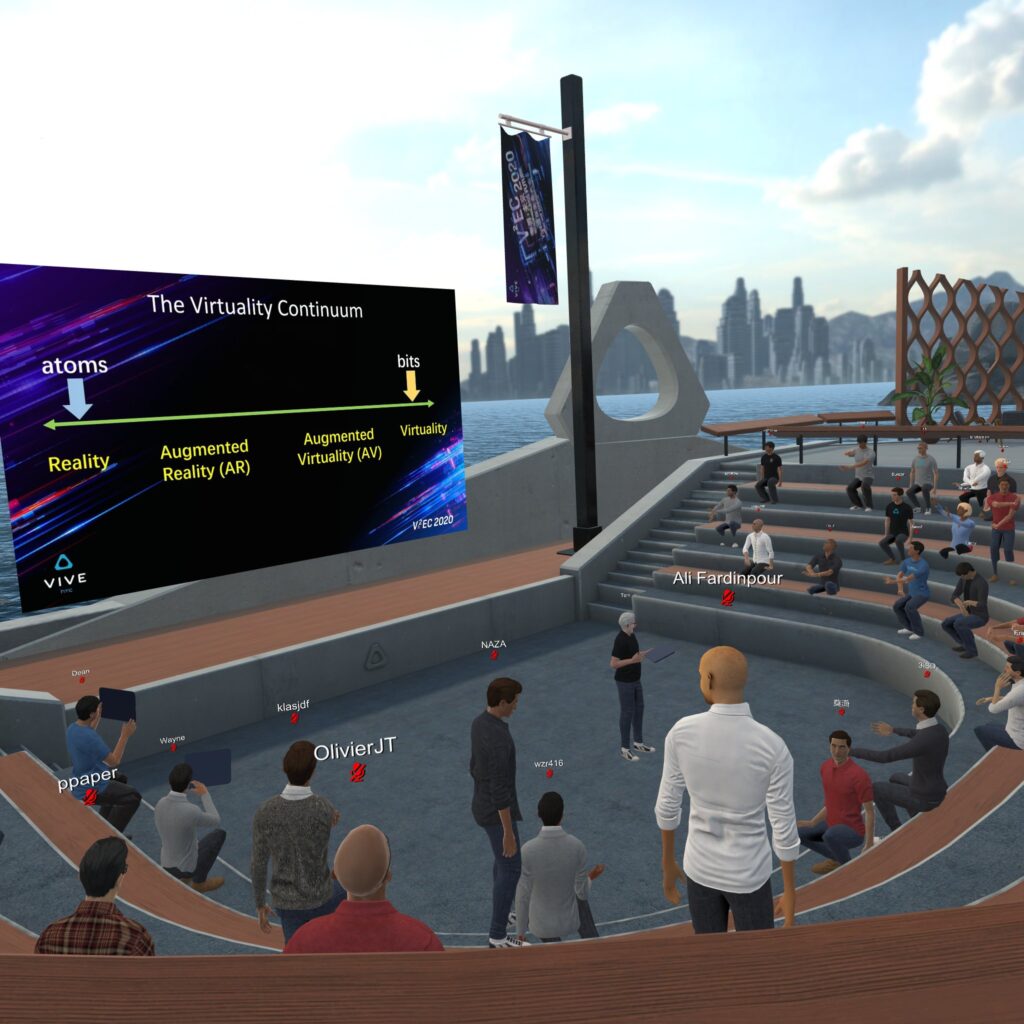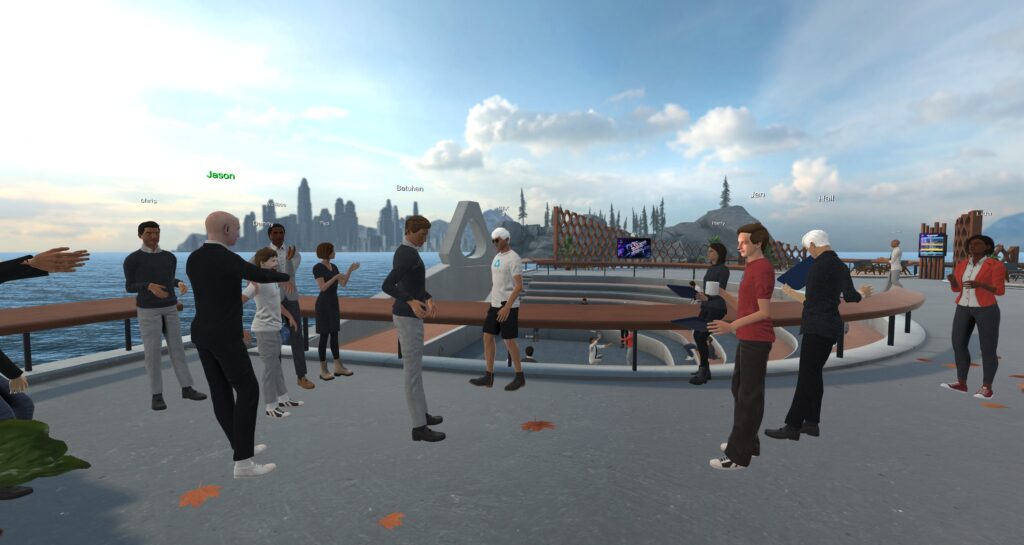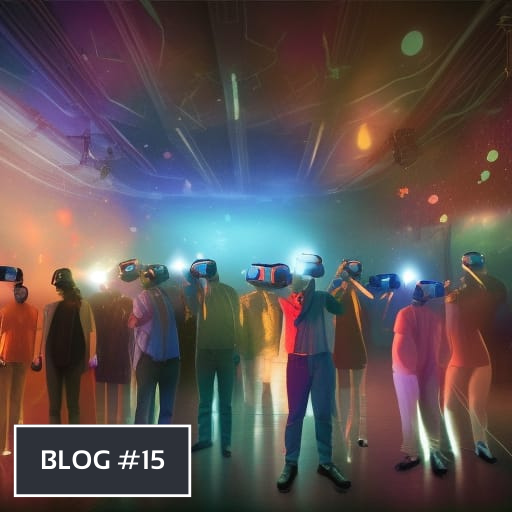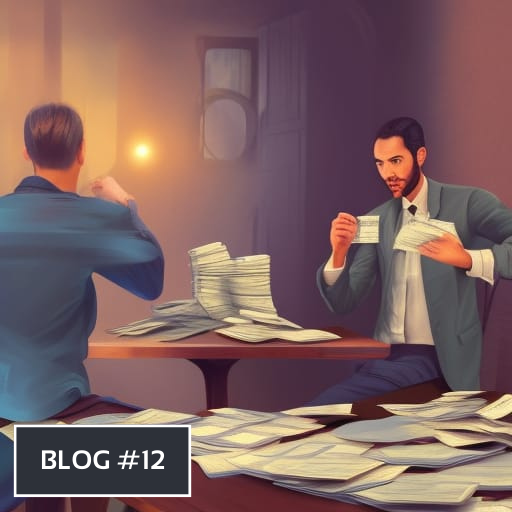Introduction
As the world collectively enters a state of lockdown due to the Covid-19 pandemic, like many other people, a number of conferences I was interested in going to or speaking at have been canceled or postponed indefinitely. However, this has also opened the opportunity to look into new experiences. For myself, I came across a conference on the future of Virtual Reality (VR) held annually in Beijing, which was transformed into an entirely VR based event. As I had just mentioned in my latest podcast episode about VR being a technology that is getting a massive push forward due to the virus, it seemed opportune to try out what VR could offer as a social experience.
Hosted by HTC Vive, one of the main players in the VR industry, the V2EC 2020 Conference aimed to bring top speakers and panelists from around the world to discuss the future of VR, AR, and XR, within the context of a post-virus world. Representatives from Qualcomm, Boston Consulting Group, and the XPRIZE Foundation were a few that joined to share their ideas. Along with the speakers, 300-400 attendees would be joining from the comfort of their various lockdown locations across the world. So how did it go?
Conference Setup
Though I have owned a VR headset since Christmas I had never setup a social VR experience. 2 days beforehand I took some 20 minutes to setup the login. But this required more than a simple download of an app and basic login that we are all accustomed to for new apps. I had to connect my headset to my computer, install a ‘backdoor’ program and ‘sideload’ an unofficial app onto my headset. Luckily the video instructions the conference website gave were clear and I was able to create a username and began to customize a digital avatar that would represent me in the VR space.
I initially thought to choose the full hazmat suit option, but as this experience also acted as an escape from my 3 days of quarantine, a casual business attire sufficed. There were some quick video tutorials on how to move around and open the menu while in the conference. But they were VR instructions similar to most other VR games and apps, only useful if someone was completely new to VR.
Entering The Conference
As the event took place halfway across the world I had to wait till 2.30am. Luckily due to living in Barcelona and being in lockdown I didn’t really have anything better to do, so though a bit tired I logged in…
I was immediately met with an open sky, distant mountains, the Golden Gate Bridge (I thought this was taking place in Beijing!?) and the outline of the San Francisco skyline! Clearly a VR environment can be built to resemble anywhere, but I was just grateful to ‘see’ the ‘sky’ after being locked in my apartment for a few days. A small amphitheater along with an open networking space contained agendas, chairs, and some other background items.

Unfortunately, I was faced with many login issues right at the start, and had to re-install a newer version of the app, missing the first introduction speech, and losing my customized avatar. Of the 5 open rooms that one could join from the login space, only one wasn’t full but the connection upon entering was quite bad, making the speaker sound as if he was repeating a few words every other sentence. In addition, an attendee would occasionally ‘sink’ into the floor, or a hand would be left dismembered and floating after someone logged out. I was even in one room where the speaker did not load and a voice simply emanated from the stage. I am not sure if it was due to my internet connection and my headset, but luckily the issues didn’t last and I was able to enjoy the conference.
The Conference Starts
The main stage where the keynote speakers stood was surrounded by people’s avatars. We were all locked in our seats and forcefully muted so as to avoid audio distractions, which allowed us to focus on the speaker, but also strangely made the event seem empty. Not even the occasional clearing of a throat, whispered comment, or basic seat shuffling occured, which you expect at every conference.

The first keynote speech was quite interesting for both the content but also for the reminder of the possibilities in VR. Not only did a train burst through the screen to emphasize a point, but as strange as it sounds, at one point whales appeared overhead… flying through the air above the audience. Though sufficiently different, due to the realistic appearance of the event our brains were tricked into believing what we were seeing, if only for a moment (at least mine was…)

During the presentations, there were also items that appeared next to or in the background of the speaker to emphasise the points they were making. For instance when XPRIZE founder and futurist Peter Diamandis was speaking about the innovations patented in 1920, twin radio towers rose in the background of the stage, and a little later when discussing the future of education, an avatar of the Greek philosopher Plato appeared. The example showcased what it will be like to learn about ancient greek philosophy in the next 10-15 years; by interacting with an AI powered Plato who knows potentially all there is to know about philosophy, one can have an immersive lesson rather than reading from a book, greatly amplifying the interest in the subject matter as well as retention rate. I know that if I were to be ‘taught’ by a near life-like digital Plato avatar I would have remembered my high school philosophy lessons a bit more than I do today.
Networking and Interacting with other Attendees
During the main break of the conference we were all unmuted and unlocked from our seats, able to wander around the event arena and get to know each other. To be honest, the networking was a bit odd (but this can also be the case in ‘real life’ conferences no?). As our avatars had limited facial expression and eye contact, it was much easier to feel anonymous and not as involved,….. especially when in the middle of a conversation the person you talk to loses their connection and suddenly disappears without any warning. The one thing that could be improved for future conferences would be the ability to see someone’s contact details. There were no virtual business cards available and connecting was a bit challenging.
However, even with these minor issues, it was amazing to be able to talk to people from across the world about how they were involved in VR, and what they thought the future would hold. Also, the sense of actual presence greatly increased the level of immersion compared to interacting over skype or other screen based communication tools. I was able to speak to people who were currently in Beijing, Sydney, Vietnam, USA etc. A big topic was of course how everyone was being impacted by the virus, but we were all grateful for the ability to come to the conference and hear the valuable ideas being shared.

Final Thoughts
The conference had its share of bugs and glitches and obviously wasn’t perfect. VR still has a ways to go before being accepted by the general population, and truly used as an alternative to real in person meetings. BUT, the opportunity it afforded to have an international meeting in a time of global shutdown was unprecedented. Not only this but the amount of CO2 emissions, travel time, and money saved by all of us was significant. In a post-virus era, VR will play an ever growing integral role in our ability to interact and exchange ideas. The countless opportunities and benefits that will come with advanced graphics and bandwidth, brought by 5G and improved computing power through Moore’s law, will have a dramatic impact on the way we work, interact with distant friends and family, and learn. It might be 5 to 15 years away, but VR, along with AR and XR will be part of the large number of profoundly impactful technologies that our civilisation will have to learn to cope with. I’m glad to have had the opportunity to see a part of what the future holds in store for us, and am excited about what comes next.






